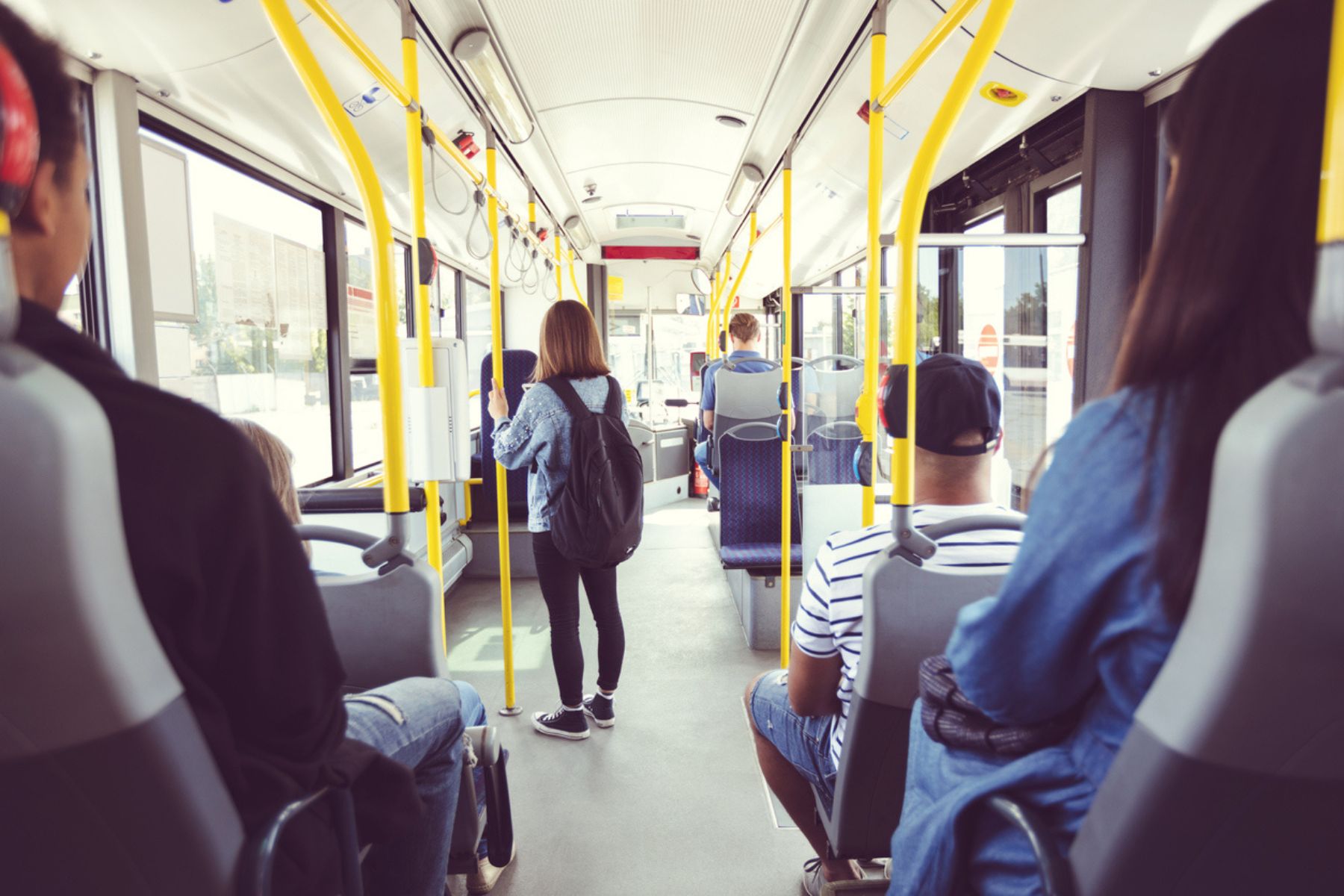To avoid a “transit death spiral” all orders of government must work together to build reliable, affordable, zero-emitting public transportation.
It’s easy to imagine that the future of transportation is a road filled with battery-powered cars. But a net-zero streetscape features much more than zero-emitting personal vehicles: it needs to include more people choosing active transportation or public transit. As Canada works to cut the 11 per cent of its emissions that come from passenger transportation, governments should lean on the significant potential of public transportation.
Transit systems are already helping reduce Canada’s emissions. Because buses, trams and subways move more people and use less space than private vehicles, they reduce traffic and congestion, avoiding an estimated 4.7 Mt of emissions per year and simultaneously contributing to cleaner air. Our analysis shows that public transit could drive a further 8 Mt in reductions in 2030, exceeding the emissions reduced by electrifying personal vehicles in that year.
To deliver these significant emissions reductions, public transit needs to be more widely used and it needs to be decarbonized.
These would be difficult goals to meet at the best of times. But the impact of the pandemic on people’s travel choices— not to mention transit agency budgets—threatens to halt Canada’s momentum.
COVID-19 and the “death spiral”
People will only use public transit if it is accessible and convenient. Canadian census data show that people are more likely to commute by public transit when they live and work near transit stops—and when they live in urban areas. Even before the pandemic, only about 12 per cent of commuters in Canada used transit to get to work.
Then COVID-19 arrived. The pandemic hit public transportation hard, as people worked from home or stayed away from buses and subways. Since transit agencies depend on fares to cover most of their operating costs, they had to cut services or secure emergency funding from federal, provincial and territorial governments to stay afloat. Transit systems are now in a precarious position. Most emergency funding has ended, and ridership is recovering but only about 70 per cent of its pre-pandemic level.
There are signs that transit systems do not have the resources to rebuild—let alone expand—their ridership. Whereas B.C. recently offered extra funds to keep Vancouver transit running, some other municipalities are planning to cut transit service this year, citing low rates of use and depressed revenues. Research suggests that this is a symptom of a vicious cycle, the much-talked-about “transit death spiral”: lower budgets mean less accessible, less convenient and lower quality service, all of which discourage people from using transit.
Accelerating the transition to zero-emission fleets
Then there’s the question of decarbonization. To this point, Canada has made slow progress adopting zero-emitting public transit fleets.
In the long term, public transit systems will benefit from electrification since zero-emissions vehicles have lower operating costs than diesel or gasoline-powered vehicles. In the short term though, zero-emission vehicles bring higher capital costs and all the complexity of installing new charging infrastructure, refitting facilities and retraining personnel.
The federal government offers funds to help municipalities cover these additional costs and has committed to getting 5,000 electric buses on Canada’s streets by 2026. However, Canada has a long way to travel to meet that goal, with only 639 zero-emission buses in use or being procured this year. Recently announced procurement will help to close this gap.
Making public transit the climate solution it’s meant to be
Every order of government has a part in strengthening Canada’s public transportation systems.
Since accessibility is so important for attracting people to public transit, it’s crucial that public transportation systems have sufficient operational funding for frequent, convenient and safe service. With systems still recovering from the pandemic, federal, provincial and territorial governments have greater capacity to provide this funding, not least because they have more access to credit.
Municipal and regional governments have other tools to encourage more people to use public transit. They have the localized information about who uses public transit and where demand may grow in future, making them well placed to determine where systems should expand and how to keep attracting riders. Municipalities also have more room to innovate. For instance, some cities have experimented with free transit as a way to keep systems affordable: Calgary has made parts of its C-Train free of charge, while Victoria made transit free for youth 18 and under.
The transition to zero-emitting fleets will require similar feats of intergovernmental coordination. Higher orders of government provide much of the capital for this transition, putting them in a natural position to identify and disseminate best practices. Meanwhile, municipalities, transit agencies and utilities can advance the more granular work of decarbonization, like identifying the most efficient and affordable ways to fuel zero-emission vehicle fleets. In Vancouver, TransLink worked with BC Hydro to design a unique electricity tariff and a demand charge exemption for the city’s public transit system.
Reliable, affordable, zero-emitting public transportation is a truly collective project. The more closely governments work together, the more likely they are to build transit systems that can take people—and Canada’s emissions—where they need to go.
Ross Linden-Fraser is a Senior Research Associate with the Climate Climate Institute.
